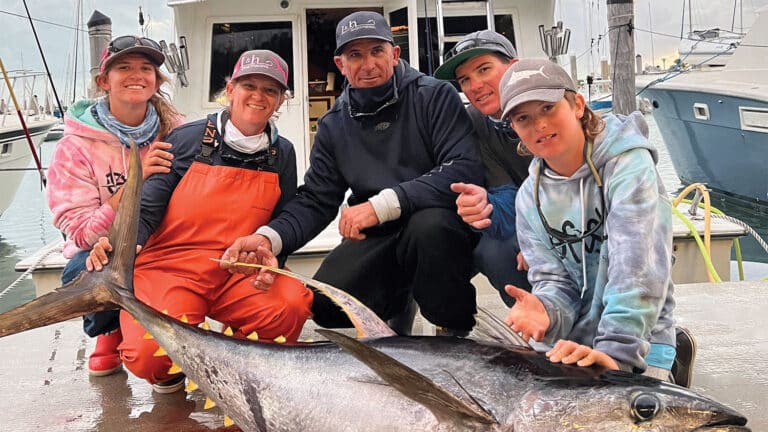
After getting the fish in a bucket, I re-baited and sent the treble hook down again. Almost immediately, I felt another bite, and pulled up gently to set the hook. Feeling some heavy resistance and a little give, I reeled down hard to keep the fish out of the rocks and away from the nearby concrete piling. But the fish didn’t move — because it wasn’t a fish. After tugging and jerking to free my hook from the bottom, I noticed that I could actually lift whatever it was I was attached to. You guessed it; I was hung in a fishing cast net that someone had tossed off the bridge without first securing it to their wrist!
As soon as I lifted the cast net up to where I could see it, I switched from trying to free the hook to full rescue mode. I got the fishing cast net up, and it was a brand-spanking-new 10-footer without a single hole in it, and I was stoked! Now I was going to be able to get my own bait without having to pay for it! If you’re a bait fisherman, having a good cast net for fishing that’s matched to your primary bait targets is a necessity.
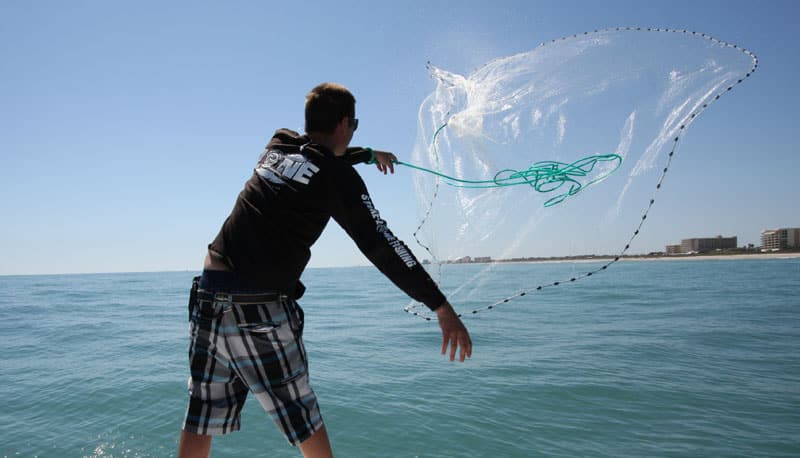
How to Measure the Size of Your Cast Net
I call that rescued fishing cast net my first real one, because I had previously owned a couple of small 3-foot cheapie cast nets made out of cotton thread, which were easy to throw but wouldn’t sink fast enough to catch the faster baits, like mullet. I mainly used cast nets to catch tiny white bait at the edge of the Indian River. As I started chasing larger baits, it didn’t take long for me to realize that the small cast net wasn’t going to cut it.
Although cast nets come in a wide variety of sizes, ranging from small 3-footers to commercial cast nets measuring up to 14 feet (the maximum size you can use in Florida), most recreational anglers use cast net sizes measuring 8 feet and under for fishing. Cast nets are measured by how tall they are with all the leads touching the ground, which is actually the radius of the net when it opens up. For example, a 3-foot net opens up to a diameter of 6 feet across and an 8-footer opens up to 16 feet across.
“When you step up to the 10s, 11s or 12s, there’s a dramatic increase in square footage and weight, so you need a bit more experience to throw one of the larger nets.”
Tim Wade of Rockledge, Florida, has been building cast nets for 43 years for anglers. If you see a commercial fisherman heaving a cast net in Florida, odds are it’s one of Wade’s nets.
“If you’re a recreational fisherman, a 6- to 8-foot cast net should be just fine,” Wade says. “If you want them to sink a little faster, you can bump up the weight a bit. With bigger cast nets, it’s going to be harder to get a lot of distance, and you’ll need to use a different throwing technique. It’s more difficult to throw 10s, 12s, or even 14-footers. I consider 10- and 12-foot ones to be commercial nets, but I can build you any size you want.”
If you’re going to be throwing the cast net while wading, you’ll want to opt for an 8-foot or smaller one, unless you’re NBA-player height.
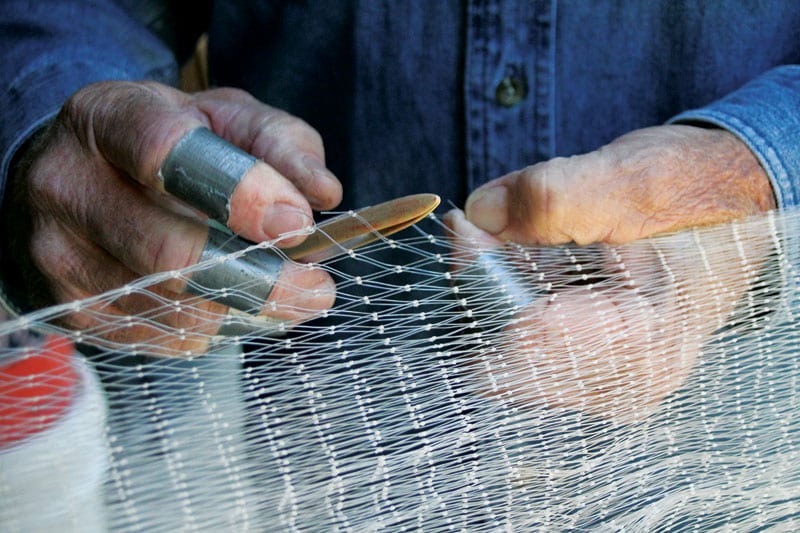
Top Materials for Cast Nets
While natural-fiber cast nets made from linen and cotton ruled the early days, nylon ones were all the rage before monofilament came along. “Mono doesn’t absorb water, and it’s clear, not white like nylon, so the fish don’t see it coming. Also, the old nylon cast nets used to absorb water, which meant that they would gain weight. All the good cast nets for fishing are made out of mono these days,” Gore says.
While most cast nets have to be finished by hand in some way, the actual mesh body isn’t hand-tied; it’s weaved on a loom. “The mesh is machine-made and tied. A hand-tied cast net will look puffy,” Wade says. “And although they work just as good, they won’t sell as well because they don’t look as nice. When the machined web comes off the loom, they stretch it with steam, which makes it lay flatter and look better. Older, hand-tied nets would have more spring and bounce up and down, while today’s nets are straighter.”
Besides the switch from nylon to mono, most materials haven’t changed much. However, Wade says that one product has made a drastic difference in how long his cast nets will last. “I now use a Spectra fiber twine to attach my weights to the lead line,” he says. “This stuff is about the same thickness as dental floss, yet you can lift 150 pounds with it. It’s so dense that I had to invent my own knots and coat the material in bee’s wax to make it stay in place. Once it sets, however, it makes the perfect material, because it’s so small that there’s less material for abrasion, and that’s the part of the net that takes the most beating.”
Gore says that while materials are important, it’s the construction and size of the cast net’s individual panels that determine whether or not a cast net will open up properly. “Larger panels mean more material, and more material allows the cast net to open easier and stay open while it’s sinking,” he says.
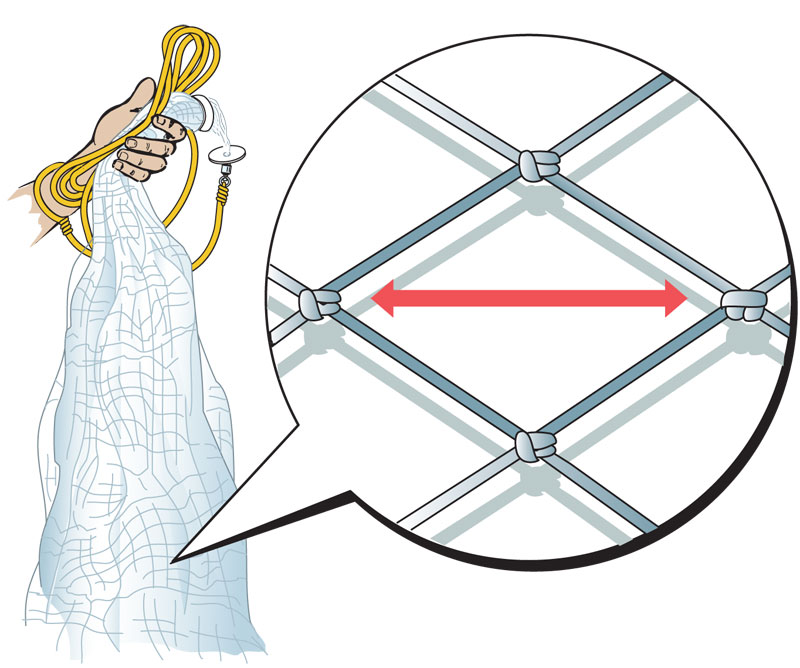
Choose the Right Mesh Size and Weight of Your Cast Net
Cast nets also come with different-size mesh, which, along with the weight, determines the sink rate and the size of the bait you can catch. “Your mesh size is determined by the size of the bait you’re targeting. You want to use the largest mesh possible, without gilling the bait. That way you get the fastest sink speed without damaging the baits,” Gore says. “The ⅜-inch mesh is probably the most popular and most versatile mesh size.”
As a general rule of thumb, Gore likes to use the following formula when it comes to cast-net mesh size: ¼-inch for small white baits measuring 2 to 3 inches; ⅜-inch for 3- to 4-inch baits; ½-inch for 4- to 5-inch baits; and ⅝-inch for baits 5 inches and larger.
Weights for species like pinfish and mullet become very important because they will hang near the bottom and try to get out. You have to have a tight bottom seal. “We like to attach our weight about 2½ inches apart,” Gore says. “On other, less-expensive introductory cast nets, the weights may be spaced as much as 6 inches apart.”
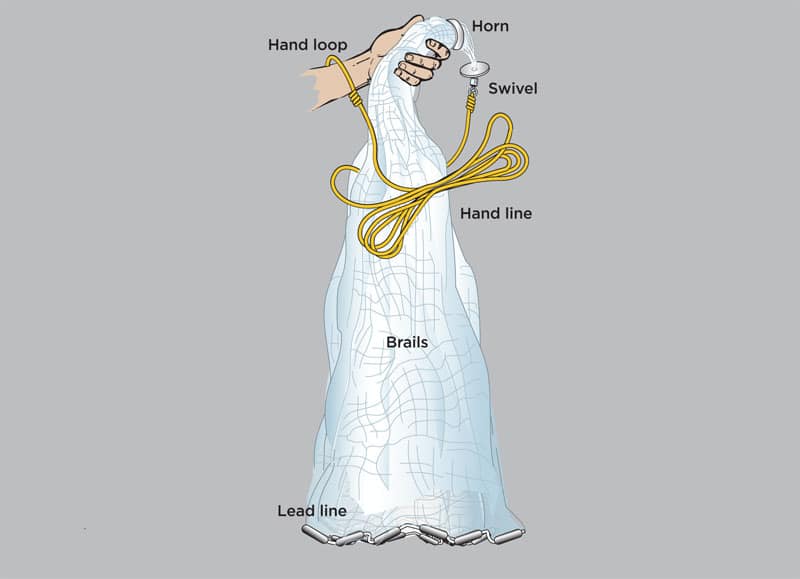
When it comes to the sizes and shapes of the weights, the mesh size comes into play — as well as where you’re going to be throwing the cast net when fishing. “With anything less than a 1¼-inch mesh, you can use a ball lead or football shape. Once you get up to a 1½-inch mesh, you need to use longer leads to keep them from catching in the mesh. Also, if you use smaller, round leads, and you’re throwing in the grass a lot, these small weights will dig down in the grass and you wind up catching as much grass as bait,” Wade says.
A good high-performance cast net should have at least 1.5 pounds of lead per foot, so an 8-footer should weigh at least 12 pounds. “That extra weight can mean the difference between catching two or three pieces of bait versus 250 pieces,” Gore says.
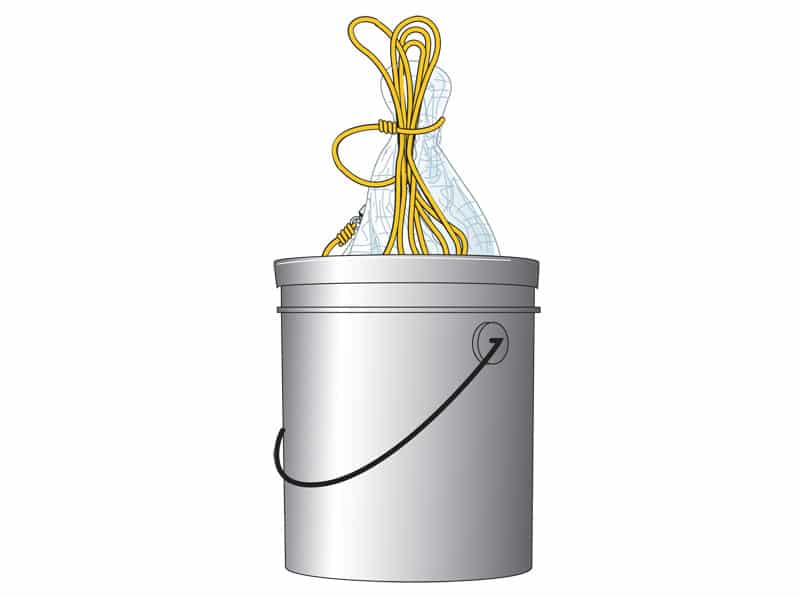
Storage
How to Throw a Cast Net
There are almost as many ways to throw a cast net when fishing for live bait as there are sizes and manufacturers — some are easy and some are pretty hard to get a handle on.
I’ve never known a soul who could learn how to throw a cast net to catch bait by reading about it, but there’s one tip that should help you out and shorten the learning curve a lot. “One of the biggest mistakes that people make, besides trying to throw them too hard, is having the misconception that centrifugal force is what opens up the cast net, [and thinking] that you need to throw a cast net like a frisbee or it won’t open,” Gore says. Like so many things in sport fishing, proper technique trumps raw power.







